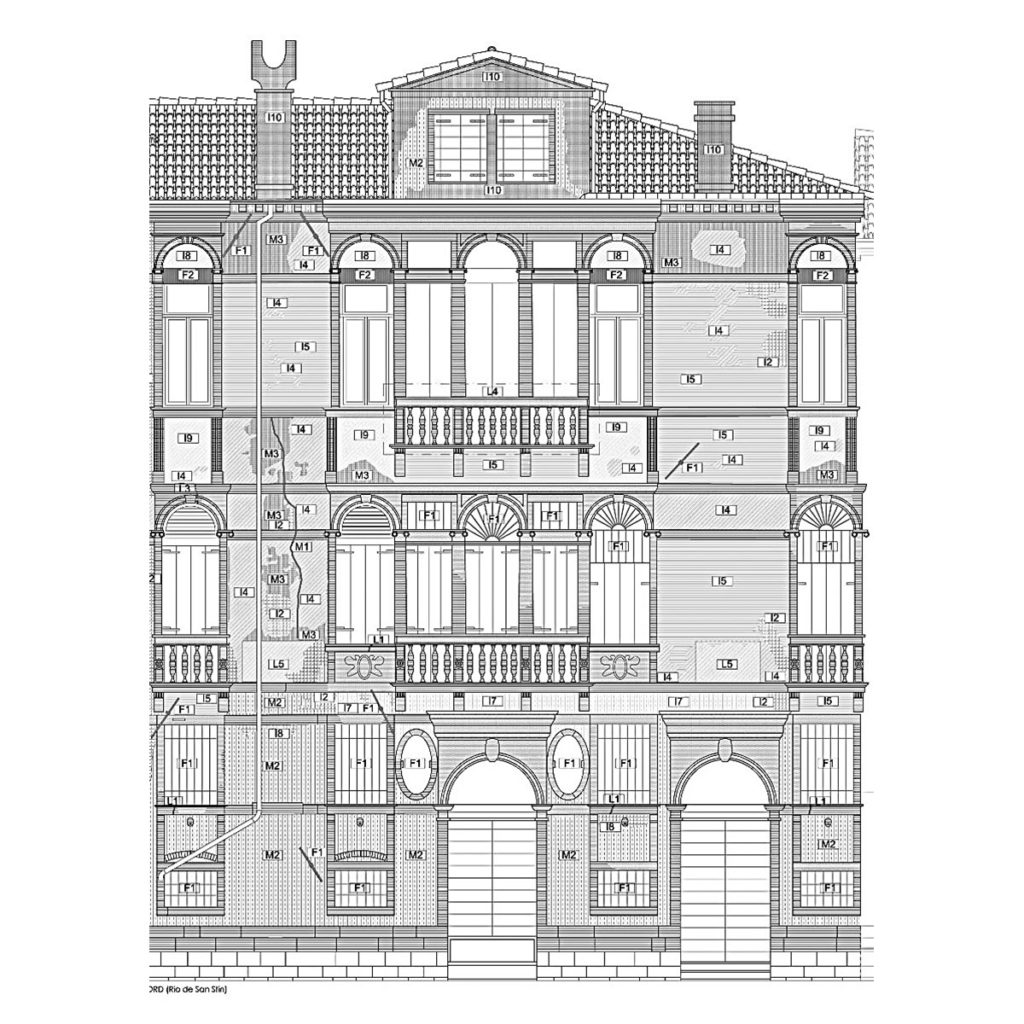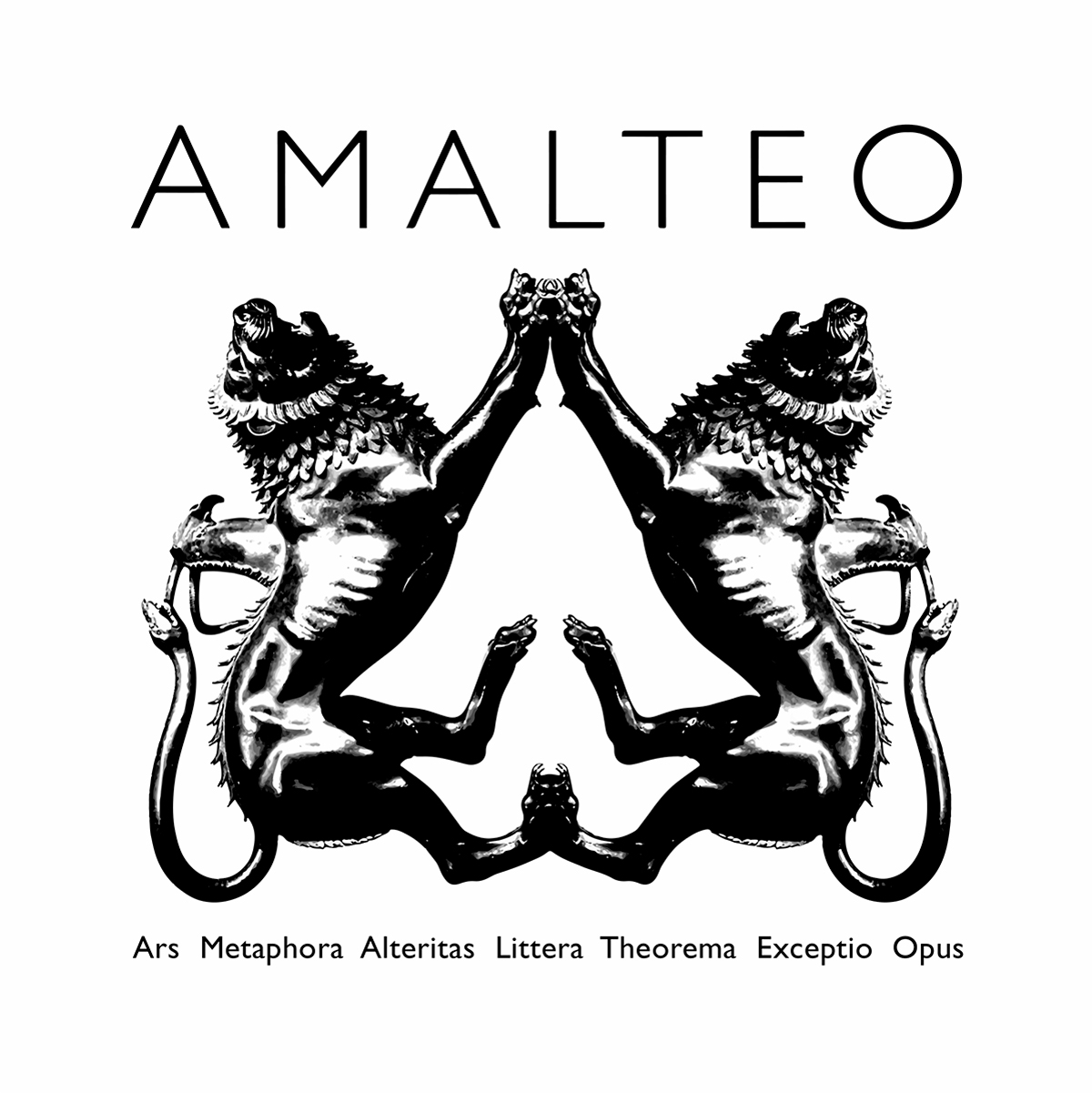INCIPIT

ASTONISH, ANTAGONIZE & THRILL
Palazzo Amalteo chooses to settle in Venice as in the subtle, secret and necessary counterweight to the world.
The programing - contemporary art and architecture - is provided by a selection of international curators. Each of these signatures is invited to dare to be bold and to assume one’s biases: immune from effects of consensus.
The ambition is to show the peculiarities of the international creative scene and to offer a fresh perspective on the contemporary data of an exhibition.
Palazzo Amalteo's program draws only on one principle of excellence: at the same time to astonish, antagonize and thrill [surprendre, contrarier et ravir / stupirsi, irritarsi e estasiarsi].
ACRONYM
We invite you to consider A.M.A.L.T.E.O. as an acronym :
A = Ars
M = Metafora
A = Alteritas
L = Littera
T = Theorema
E = Exceptio
O = Opus
Our acronym is spellable not only in Latin, but also in other languages :
English : Art Metaphor Alterity Language Theorem Exception Opus
French : Art Métaphore Altérité Langage Théorème Exception Œuvre
Italian : Arte Metafora Alterità Linguaggio Teorema Eccezione Opera
Portuguese : Arte Metáfora Alteridade Linguagem Teorema Exceção Obra
German : Arbeit Metapher Anderssein Literatur Theorem Entscheidung Opus
Spanish : Arte Metafora Alteridad Lengua Teorema Excepcio Obra
Here lies the secret formula of the Palazzo.

CHIEF CURATOR
Jean-Michel Ribettes
A life lived simultaneously in the fields of contemporary art, publishing and Freudian psychoanalysis (trained by Dr. Jacques Lacan).
International Art Curator (a selection)
PS1/MoMA, NY
Fondation Cartier pour l’art contemporain, Paris
Tokyo Metropolitan Art Museum
Shoto Art Museum, Tokyo
Hiroshima Prefectoral Art Museum
Shizuoka Prefectoral Museum of Art
Onomichi City Museum of Art
Kariya City Art Museum
Akita Prefectoral Museum of Modern Art
Herzliya Museum of Art
Museum Villa Stuck, Munich
Rotonda della Besana, Milan
Fondation pour l'architecture, Brussels
Passage de Retz, Paris
Maison européenne de la photographie, Paris
Musée de la Poste, Paris
American Center, Paris
Publisher & Editor (a selection)
Bourgois
Le Seuil
Navarin
Desclée de Brouwer
Denoël
Gallimard
HISTORY
Amalteo is the name of a noble family belonging to Oderzo, Treviso, several members of whom were distinguished in literature, art and science during the Renaissance period.
The best known are three brothers, Geronimo (1507–1574), Giambattista (d. 1573) and Cornelio (1530–1603), whose Latin poems were published in one collection under the title Trium Fratrum Amaltheorum Carmina (Venice, 1627; Amst., 1689).
The eldest brother, Geronimo, was a celebrated physician and philosopher teaching at the university of Padua; one of his sons, Octavio, was also a philosopher and a physician teaching at the same university. The second brother, Giambattista, accompanied a Venetian embassy to England in 1554, and was secretary to Pius IV at the Council of Trent. The third, Cornelio, was a physician and secretary to the Republic of Ragusa.
The painter Pomponio Amalteo (1505-1588) - who was Pordenone’s pupil and son-in-law - likely comes from this family ; in 1568, Vasari (Lifes of the Most Excellent Painters…) praised the work of the painter : ‘‘il quale per le sue buone qualità meritò d’esser genero del Pordenone’’.
Geronimo commissioned a Palladian architect to build on the bank of Rio San Stin, in the neighborhood of the Frari Church, his secondary residence, Ca’ Amalteo. With its pediment, marble balusters, Serlian windows, the building completed around 1540 adheres to all the principles of Renaissance architecture : proportion and symmetry, balance and grace. Designed in accordance with the precepts that Palladio introduced into architecture in the 1530s, the Palazzo Amalteo is a paragon of the aesthetics of the Venetian Renaissance.